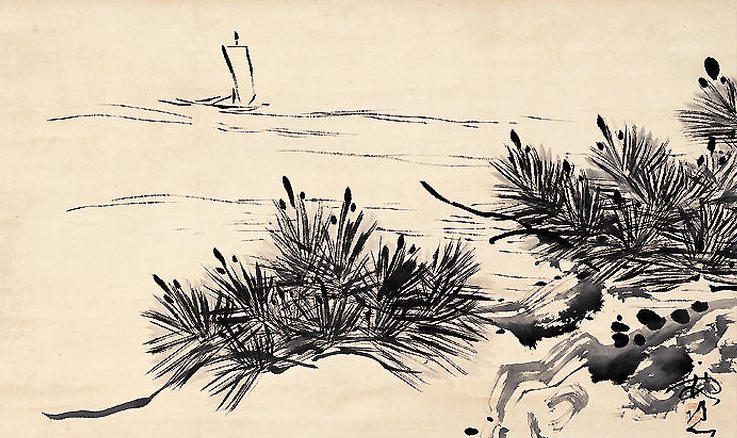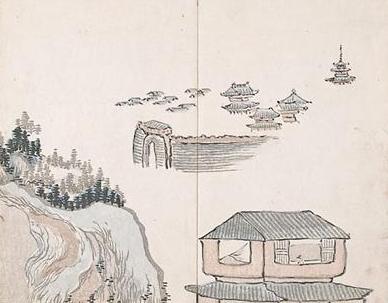Japan art and Ike no Taiga: China, Kyoto, and unseen if born today
Lee Jay Walker
Modern Tokyo Times

The early life of Ike no Taiga (1723-1776) shatters the myths of stratification and backwardness. On the contrary, he belonged to a world where Buddhism, Confucianism, Shintoism, and high culture were in the ascendency: compared to materialism, limited knowledge (in general) of the literature and cultural world that served Japan well before and during the Edo Period, and the modern world of glorifying nothingness (sports stars, film stars, and so forth – this blights Japan to the United Kingdom). Therefore, the world he belonged to enabled him to develop his art – and the gates of entering the world of high culture were immediately opened despite the poverty he was born into.
Kyoto enabled Taiga to grow and develop. Hence, the religions and philosophies of Buddhism, Confucianism, Shintoism, and Taoism ticked powerfully in his world – unlike the humdrum nature of secularism in modern Japan which is shallow in comparison. Taiga breathed the world of art, calligraphy, the spiritual dimensions of gardens, literature, poetry, and other areas of Japanese high culture that borrowed heavily from the classical world of China (the Middle Kingdom).

The Kyoto National Museum says, “Eighteenth century Kyoto produced some of the most distinctive and original painters in Japanese history, including big names such as Maruyama Ōkyo (1733–1795) and Itō Jakuchū (1716–1800). But even amongst this star-filled lineup, the artist Ike no Taiga (1723–1776), stands with fellow painter Yosa Buson (1716–1783) as the leader of the Chinese-influenced literati style of painting known as Nanga (“Southern painting”). Taiga’s works are done in a brisk, unfettered style said to exemplify the artist’s generous, humble character and indifference to fame and fortune.”
The MIHO Museum says, “Ike-no-Taiga (1723-76) was a painter known as one of the greats of Japanese literati painting, and yet he kept himself removed from an aloof literati painter stance. He did not insist on a strict adherence to a purely literati painting style, but rather was always intent upon bringing new painterly insights and viewpoints into his work. Western-style painting expression was one such viewpoint. There are famous anecdotes regarding Taiga’s fascination with the landscape engravings brought to Japan from the West, and the veracity of such tales is confirmed by Taiga’s “true-view” realistic depictions, such as his True View of Mt. Asama.”

Ironically, despite Japan being mainly isolated from the rest of the world (according to historical writings) during the Edo Period – the narrow windows that allowed Chinese and Western high culture were highly appreciated by artists, the literature world, and so forth. This notably applies to China.
Unlike modern Japan and its endless anti-China rhetoric by politicians and the media in the area of geopolitics – or the lack of interest in classical Chinese and Japanese culture to a potent degree that existed in the world of Taiga – it is the modern world that is more narrow-minded and culturally backward (In the United Kingdom, for example, Bede, Cuthbert, Tyndale, and so forth will play second fiddle on the whole – if played at all – to the world of materialism, secularism, multiculturalism, gender identity, the glorification of rich film and sporting elites, and so-called social media influencers). Therefore, the minor windows that were open during the Edo Period were more potent than all the openness of culture in modern Japan that is genuinely reduced to snippets during holidays – or customs with little connection to the real meaning.

If Taiga had been born into the same level of poverty in modern Japan – that he was born into during the Edo Period: then the same openness of high culture would have shut the door on him. Equally, the artistic, cultural, religious, and philosophical world would not have been his natural path out of poverty. Therefore, his world turns the world of Japan – and other nations in the cultural sense – upside down.

PLEASE DONATE TO HELP MODERN TOKYO TIMES
Modern Tokyo News is part of the Modern Tokyo Times group
DONATIONS to SUPPORT MODERN TOKYO TIMES – please pay PayPal and DONATE to sawakoart@gmail.com
http://moderntokyotimes.com Modern Tokyo Times – International News and Japan News
http://sawakoart.com – Sawako Utsumi personal website and Modern Tokyo Times artist
https://moderntokyonews.com Modern Tokyo News – Tokyo News and International News
PLEASE JOIN ON TWITTER
https://twitter.com/MTT_News Modern Tokyo Times
PLEASE JOIN ON FACEBOOK